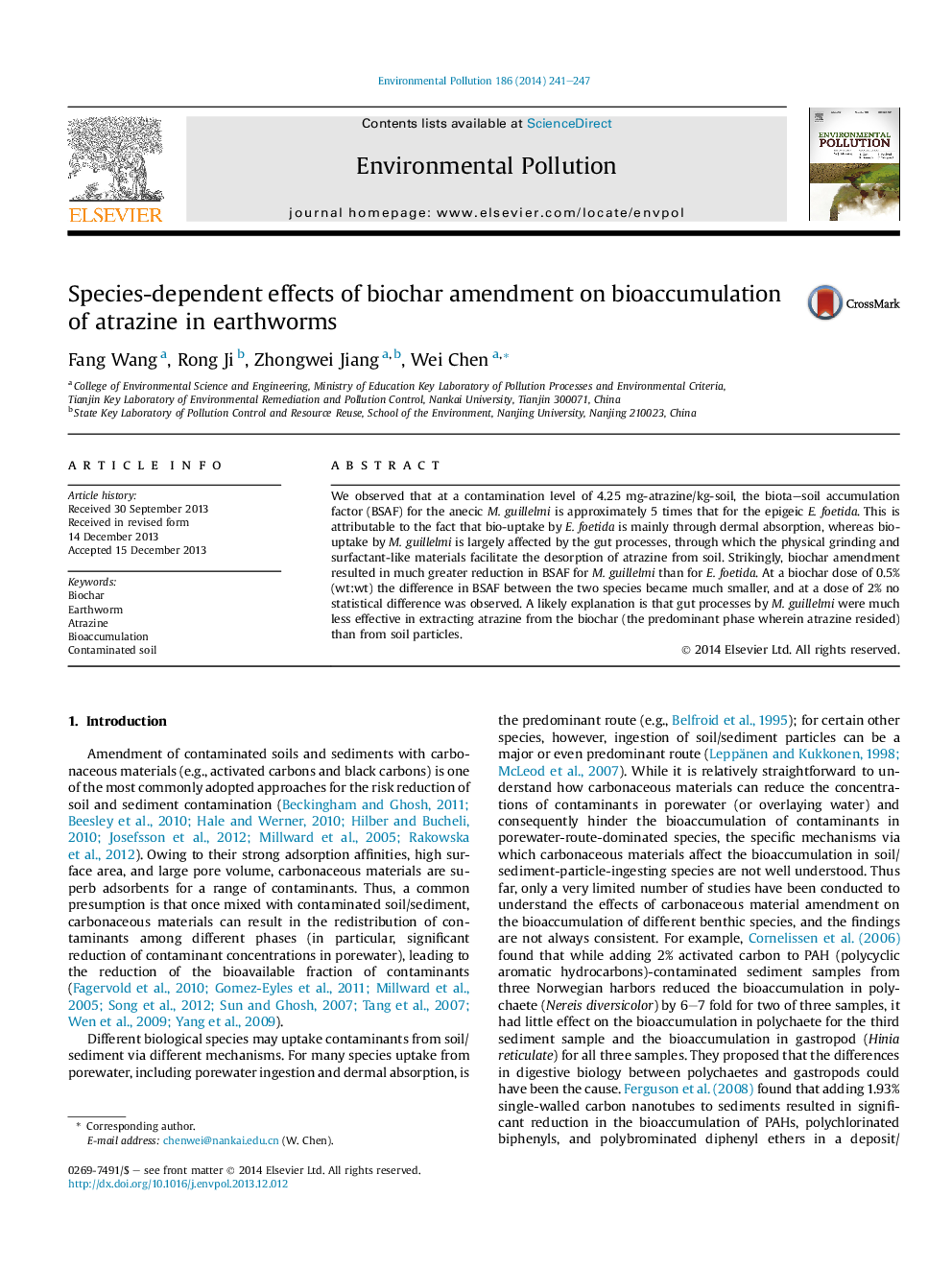| Article ID | Journal | Published Year | Pages | File Type |
|---|---|---|---|---|
| 6318414 | Environmental Pollution | 2014 | 7 Pages |
Abstract
We observed that at a contamination level of 4.25 mg-atrazine/kg-soil, the biota-soil accumulation factor (BSAF) for the anecic M. guillelmi is approximately 5 times that for the epigeic E. foetida. This is attributable to the fact that bio-uptake by E. foetida is mainly through dermal absorption, whereas bio-uptake by M. guillelmi is largely affected by the gut processes, through which the physical grinding and surfactant-like materials facilitate the desorption of atrazine from soil. Strikingly, biochar amendment resulted in much greater reduction in BSAF for M. guillelmi than for E. foetida. At a biochar dose of 0.5% (wt:wt) the difference in BSAF between the two species became much smaller, and at a dose of 2% no statistical difference was observed. A likely explanation is that gut processes by M. guillelmi were much less effective in extracting atrazine from the biochar (the predominant phase wherein atrazine resided) than from soil particles.
Related Topics
Life Sciences
Environmental Science
Environmental Chemistry
Authors
Fang Wang, Rong Ji, Zhongwei Jiang, Wei Chen,
